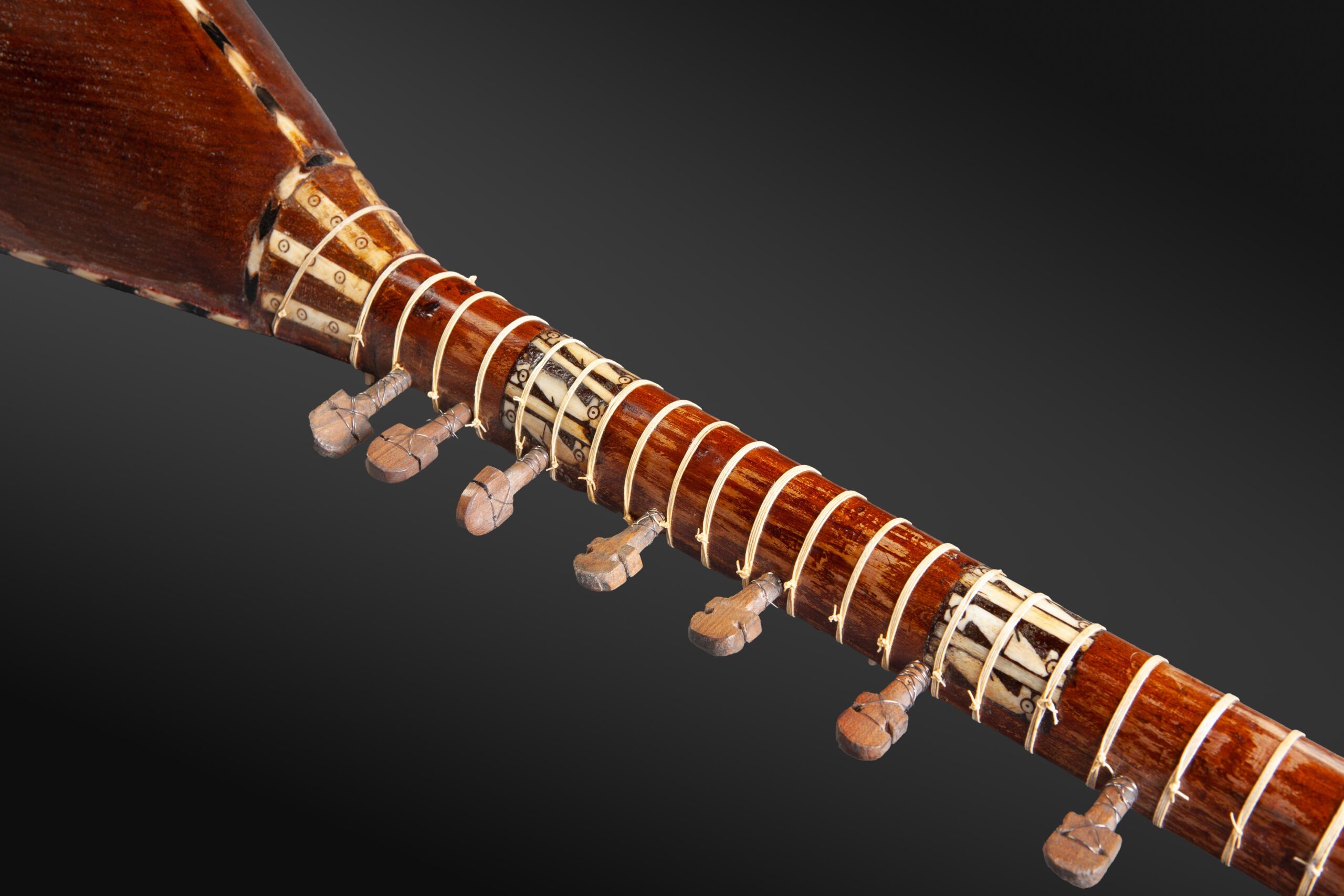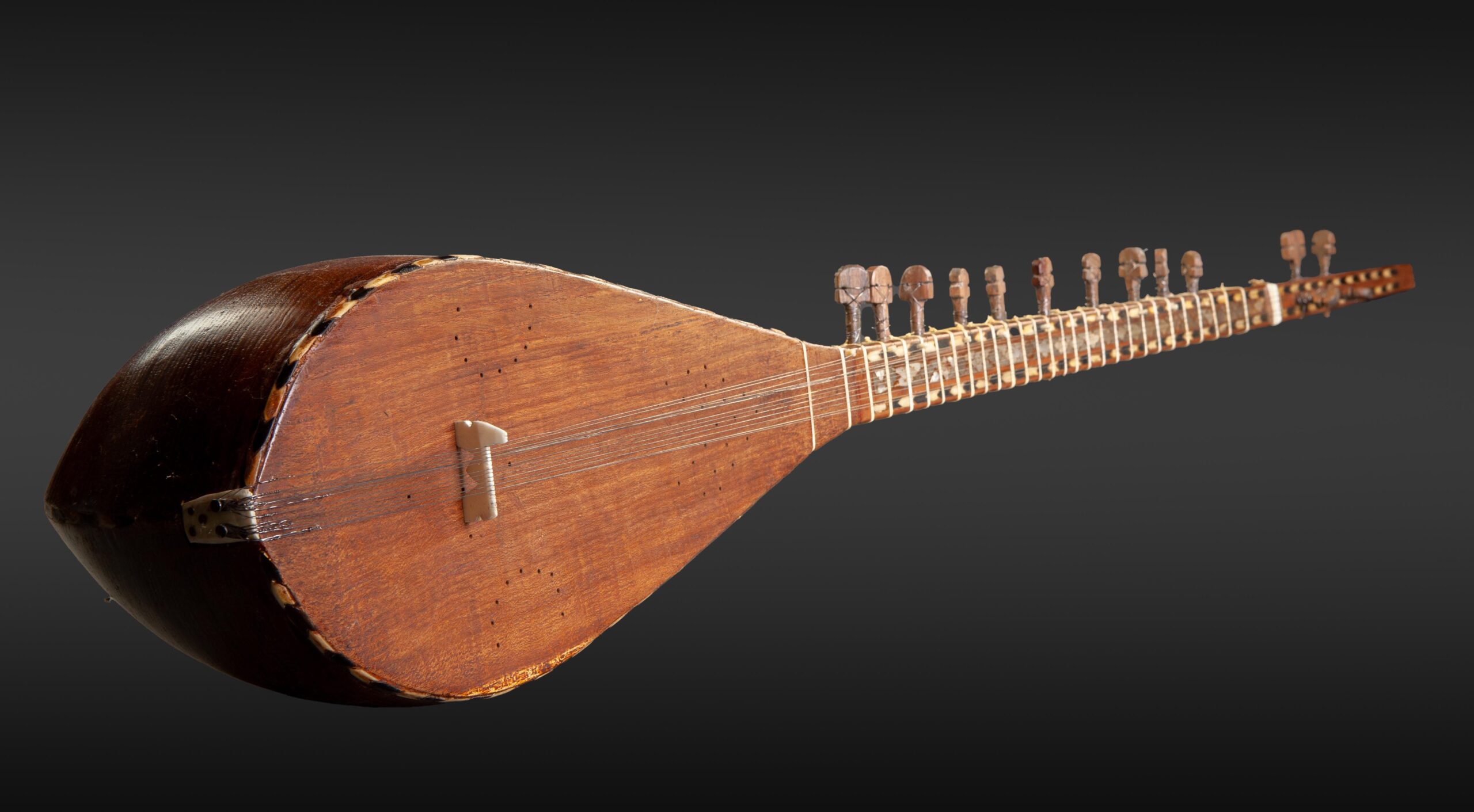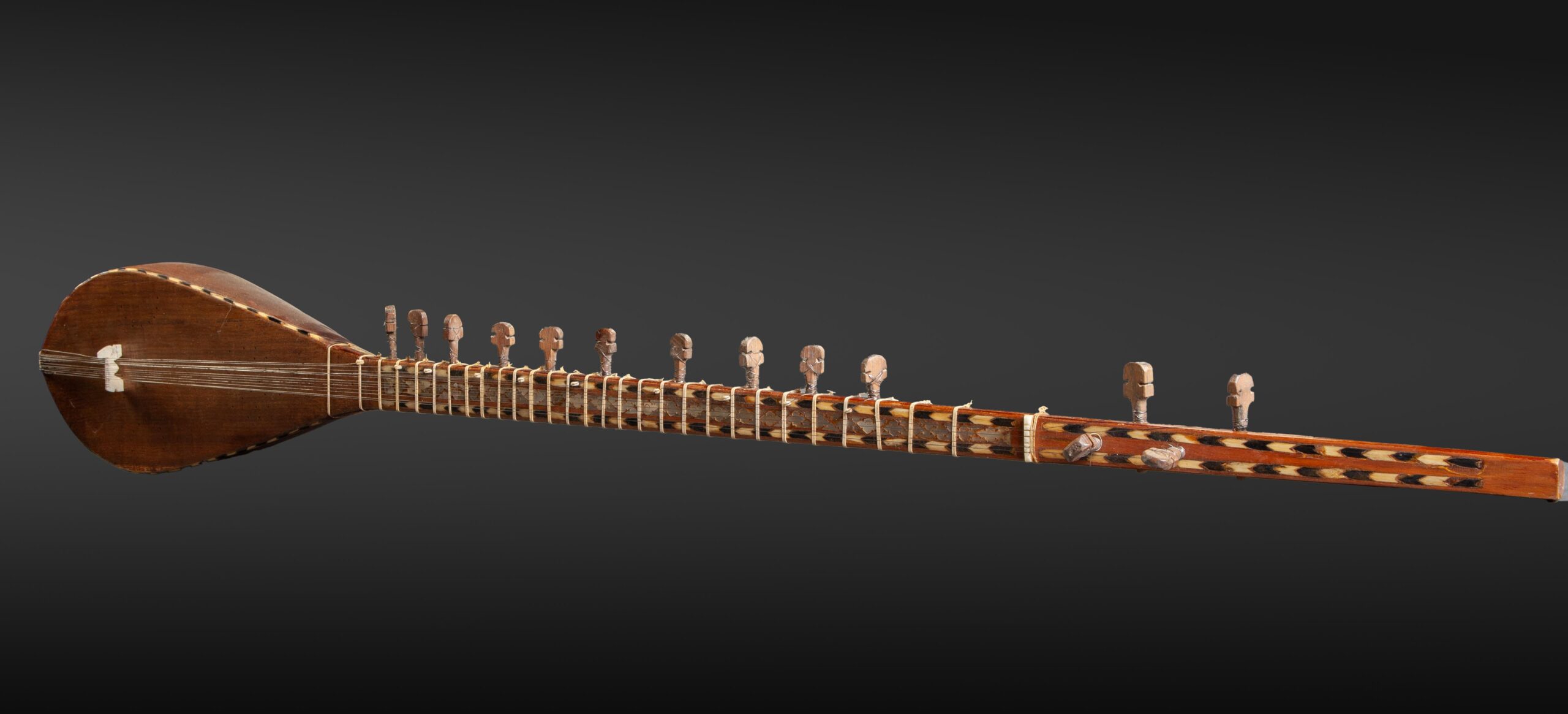DOTAR
Afghanistan, 20th century.
Long-necked lute from the Harati region, (1) around the town of Harat or Herat, in the west of the country not far from Iran and Turkmenistan.
The dotar is a long-necked lute from the tanbur family, whose name (dotàr, dutar, dotara, etc.) comes from Persian and means “two strings”. In fact, several models of long-necked lutes are called dotar even though they have more strings than their etymological definition.
The use of the instrument dates back at least to the Sassanid era. (3rd – 7th century) It is described in the 10th century by Al-Farabi in his book “Kitab Al Musiqi Al Kabir” (“Book of Great Music”).
The monoxyl body and the soundboard are made of mulberry. The handle is made of fruit wood. (probably apricot) The pegs are also mulberry.
Two double playing strings. Ten sympathetic strings. (metal)
Decorated with cut bone and mother-of-pearl.
Length: 133.5cm Width: 19cm. Body depth: 21cm.
(1) The Isfahan Music Museum preserves a lute from this region, whose technical and aesthetic characteristics are entirely comparable to the instrument presented here.
Bibliography:
Jean During: “The dotâr family in Central Asia. Organological and musicological survey,” Porte Akademik. Organoloji sayasi, Istanbul, 2012.
Jean During: “Dotar” Encyclopaedia Iranica. Ed. Yarshater, 1982.
Laurence Libin: Editor in Chief of “the Grove dictionary of Musical Instruments”. T.2, pp. 121… Oxford University Press 2014.


